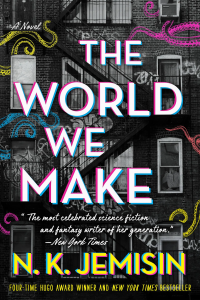Rachel Swirsky Reviews The Beautiful Ones by Sylvia Moreno-Garcia
The Beautiful Ones, Sylvia Moreno-Garcia (Thomas Dunne Books 978-1250099068, $26.99, 323pp, hc) October 2017.
 The Beautiful Ones by Sylvia Moreno-Garcia lives up to its title – it’s beautifully written, both in the sentences themselves and the images they create.
The Beautiful Ones by Sylvia Moreno-Garcia lives up to its title – it’s beautifully written, both in the sentences themselves and the images they create.
Garcia’s historical fantasy is set in Paris-like Loisail, where rich people gather for summers of courtship, parties, and simply being seen. The main character, Antonina, is a rural girl from a rich family, attending Loisail for her first season. While there, she lives with her cousin and his wife, Valérie, who has been charged with making her unruly, uncooperative niece presentable.
Antonina possesses a small amount of telekinetic magic – the book’s fantasy element – which is considered untoward in an upper-class girl. Antonina isn’t ashamed of her magic, however, and is only too pleased when the famous stage magician Hector Auvray asks for permission to court her. Hector, however, has his own reasons; he was once engaged to Antonina’s cousin’s wife, Valérie who broke it off abruptly, and married for money instead. Though courting Antonina, his true goal is being near Valérie.
Both Hector and Valérie are also viewpoint characters. This helps a great deal in creating sympathy – or at least understanding. When Hector grows as a character and remonstrates himself for manipulating Antonina, it comes across as genuine (though not necessarily forgivable). Valérie’s increasingly unhinged attempts to ruin Antonina are comprehensible within her point of view, but would probably seem erratic and baffling without it.
The Beautiful Ones is fundamentally a romance. The characters occupy familiar roles. Antonina is the romantic heroine: an outsider, too honest, too practical, and too smart, more interested in etymology than fashion (also, she’s a brunette). The romantic hero, Hector, is a wounded iconoclast with a broken heart. Blonde Valérie makes a familiar villain, socially adored but grasping, hateful, and manipulative.
That’s not to say the characterization is bad. It’s not. Antonina and Hector both feel like well-rendered, interesting people. Valérie at times feels less realistic – or, perhaps more accurately, she sometimes feels more stylized than the other characters, and therefore a bit out of place. Just as Garcia is playing with traditional romance storylines, she’s also playing with traditional romance characters. Both storylines and characters are very well-executed, though neither test their boundaries.
Beauty plays an interesting role in the book. The characters who are depicted as possessing extreme physical beauty – Valérie and Antonina’s brief fiancé, Luc Lémy – are callow, ranging from thoughtless to cruel. They’re also characterized (particularly Valérie) as scrabbling to maintain their class privilege, a struggle in which their beauty is a necessary tool. While Valérie and Luc are vain and preoccupied with fashion, Hector and Antonina are pragmatic, which is presented as a virtue. However, unlike Valérie (and to a lesser extent Luc), both Hector and Antonina are financially secure – Hector through his work, and Antonina through her birth. Valérie is a terrible person (and Luc isn’t a great one), but the role of physical beauty in their awfulness is interesting.
The book’s fantastical element is very minor. Antonina and Hector bond over their talents, but a mundane substitute wouldn’t have injured the plot. The one moment where magic is vital could also be easily shifted. Readers whose primary interest in fantasy is showy magic may not be satisfied with this book.
However, readers who enjoy light speculative elements, historical fantasy, romance, and beautiful prose will find a trove. Straddling several genres with elegant intelligence, The Beautiful Ones is both an easy read and a fulfilling one.







